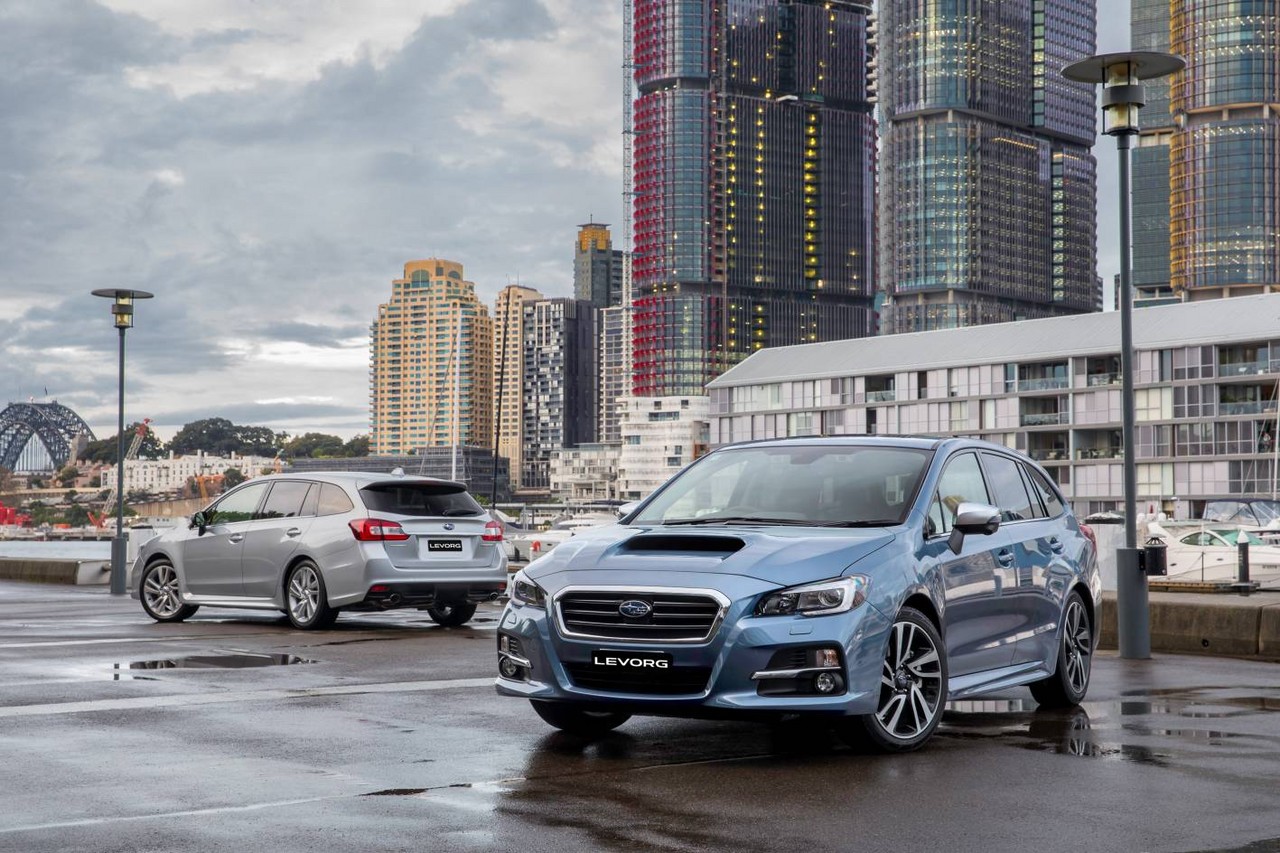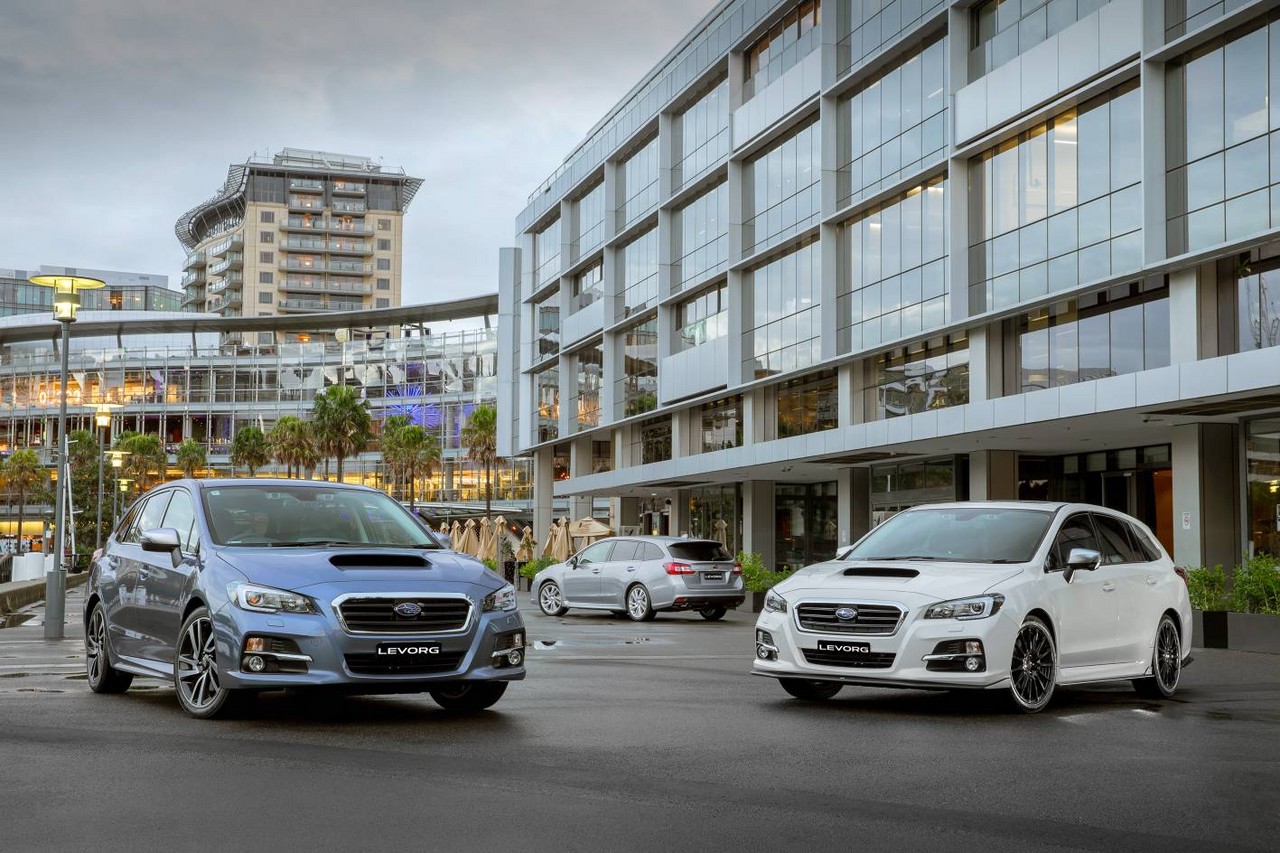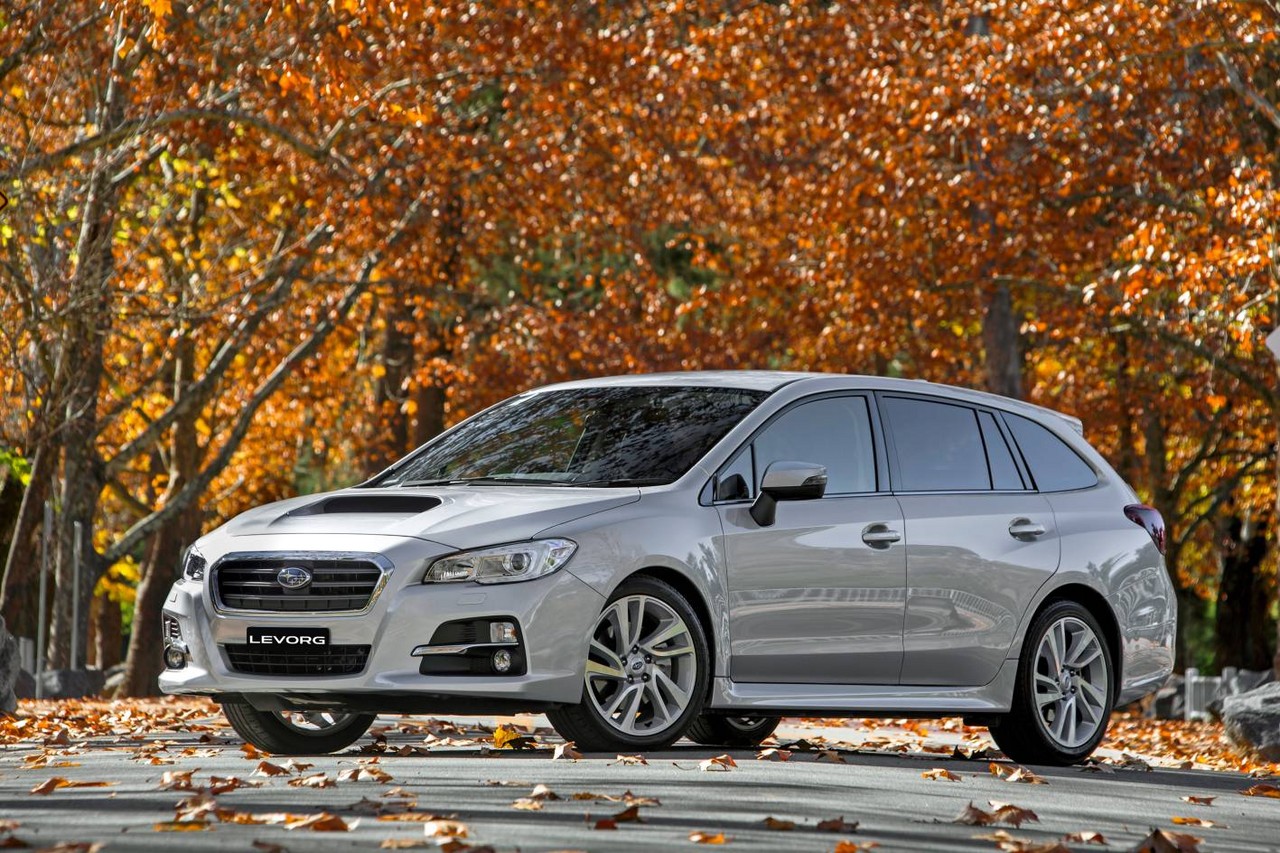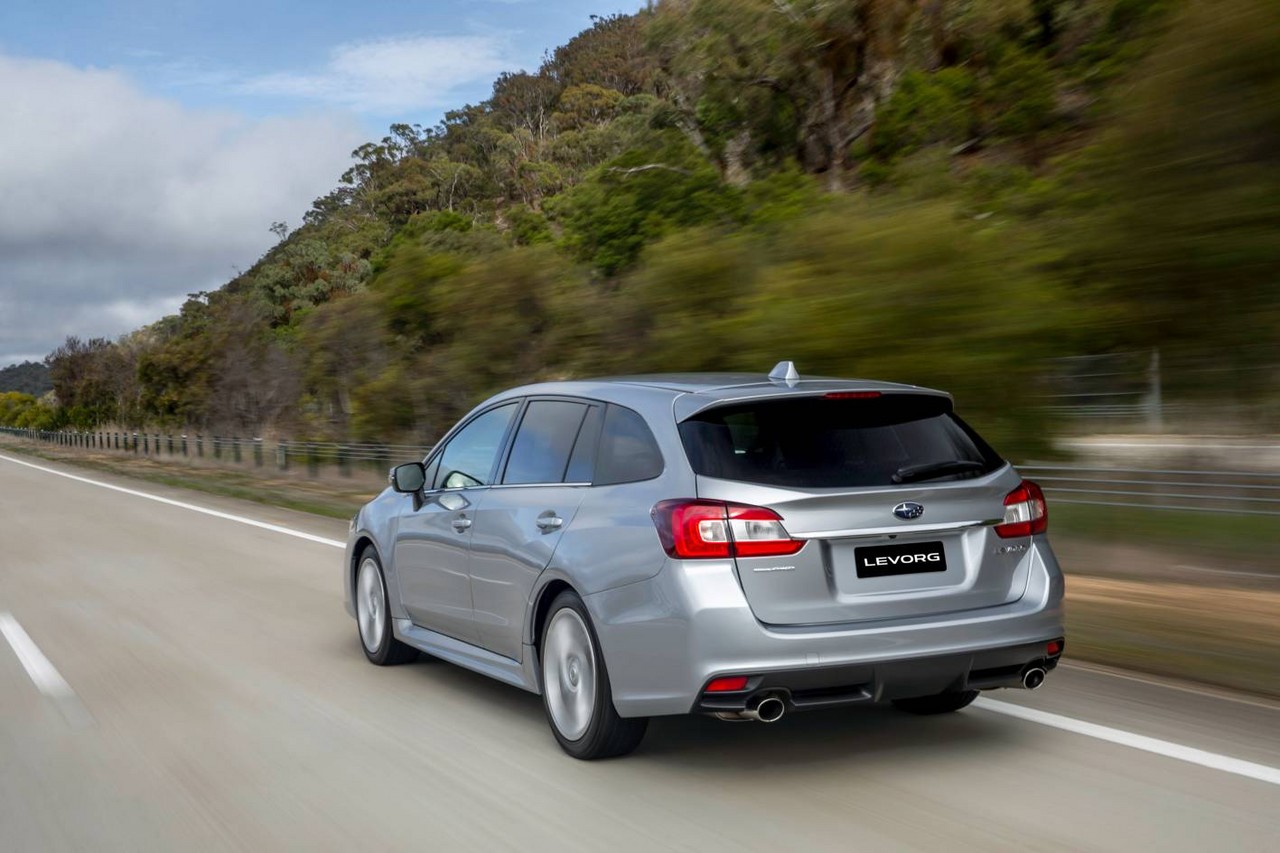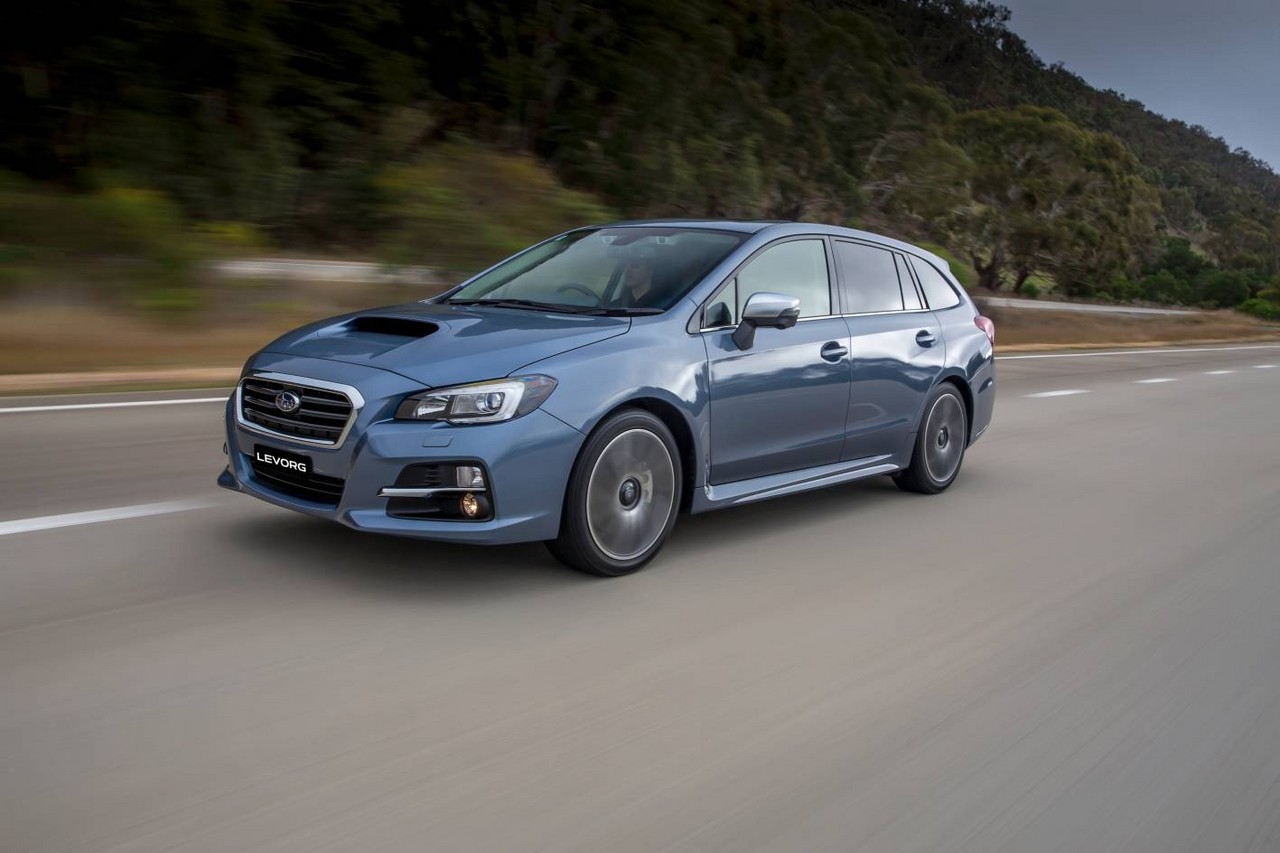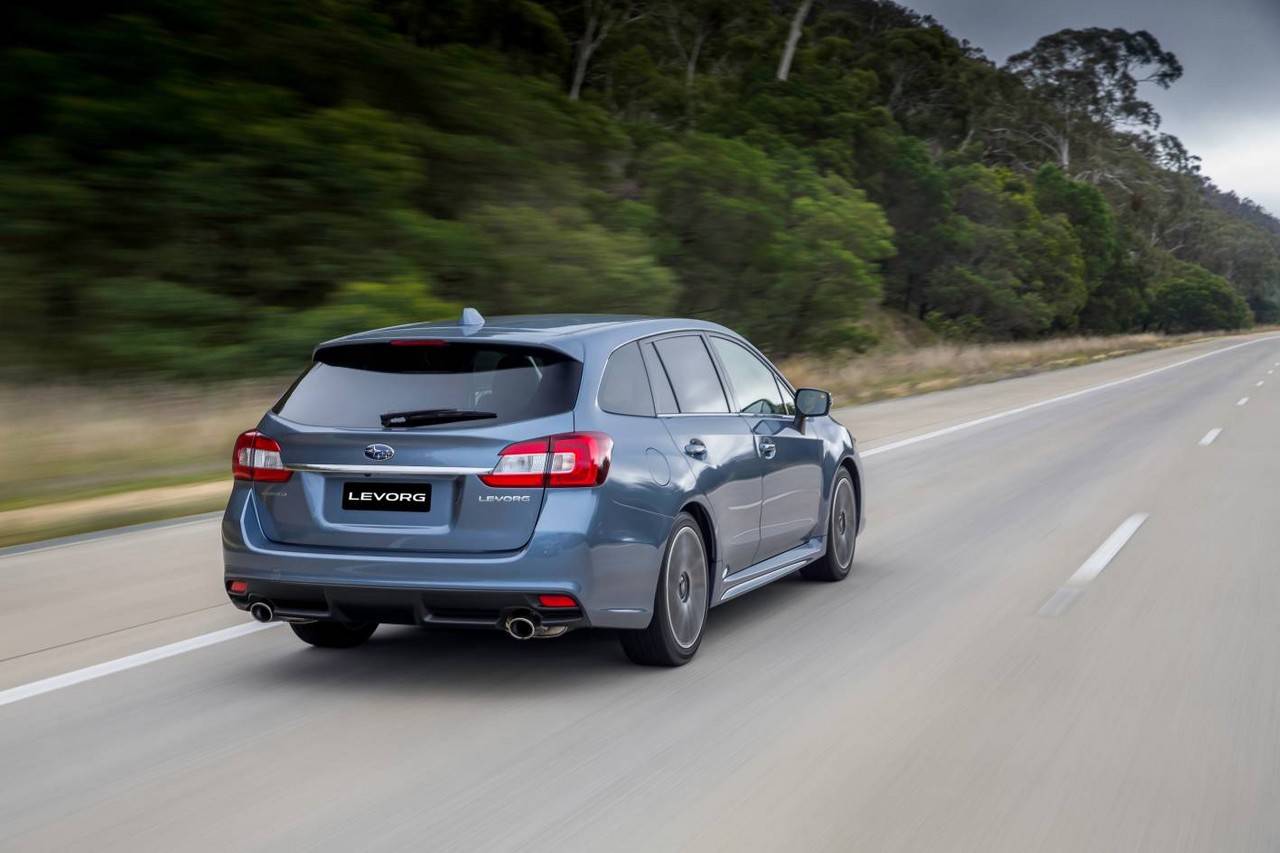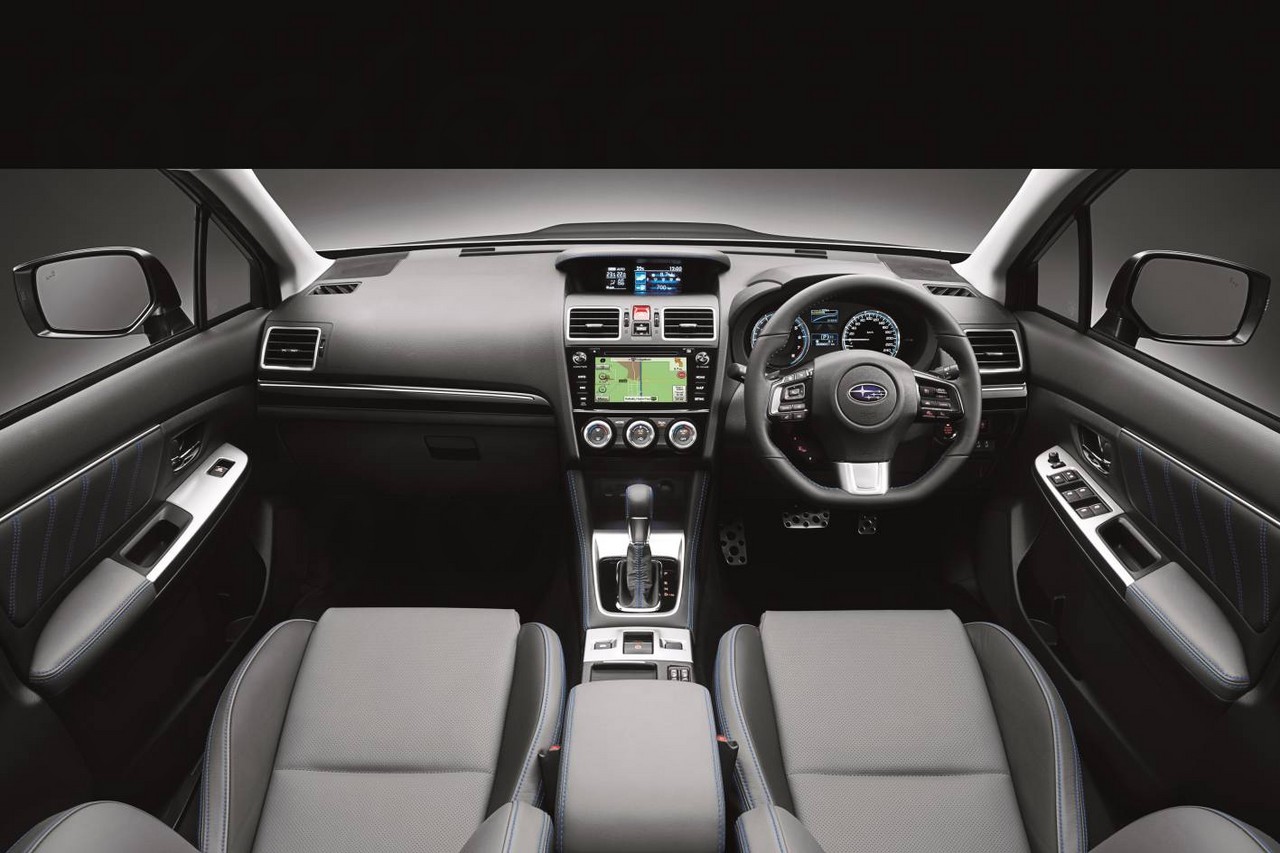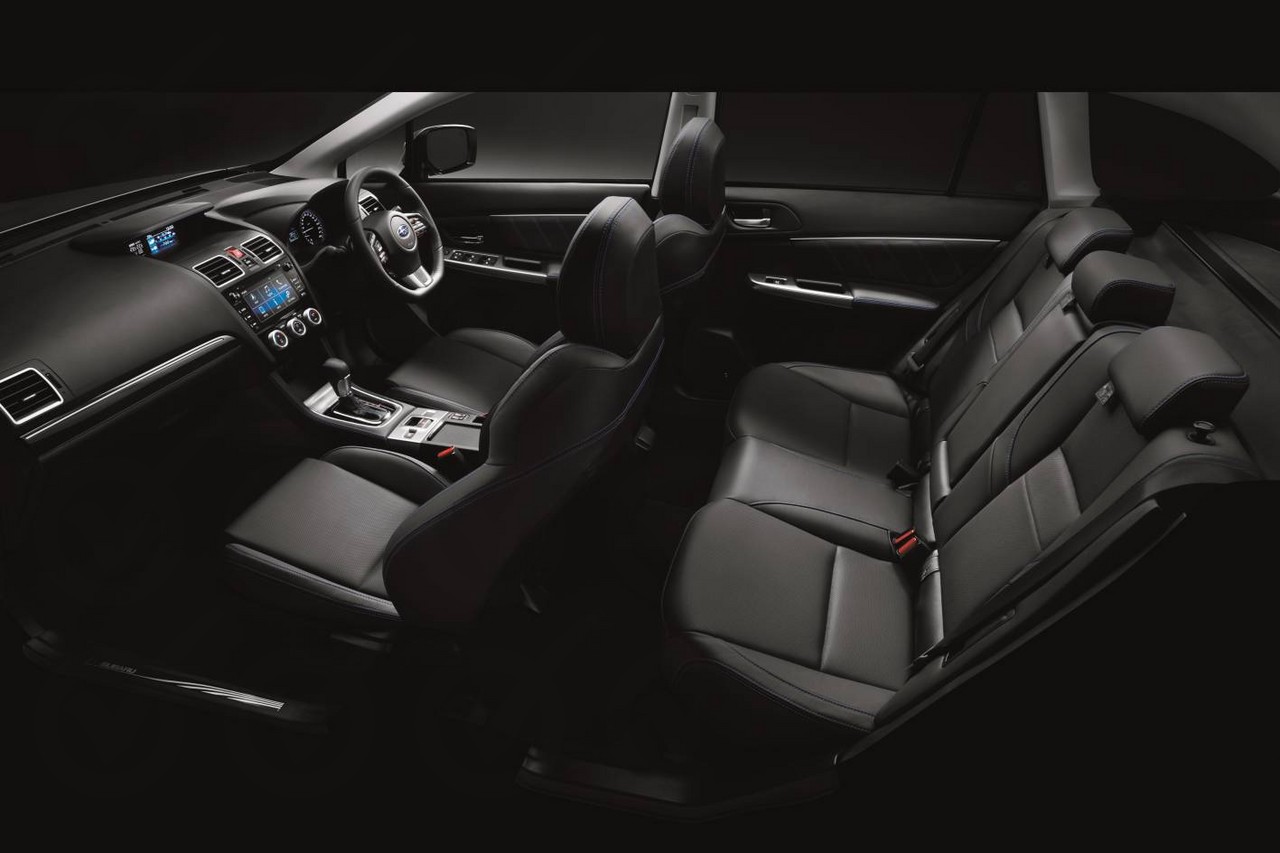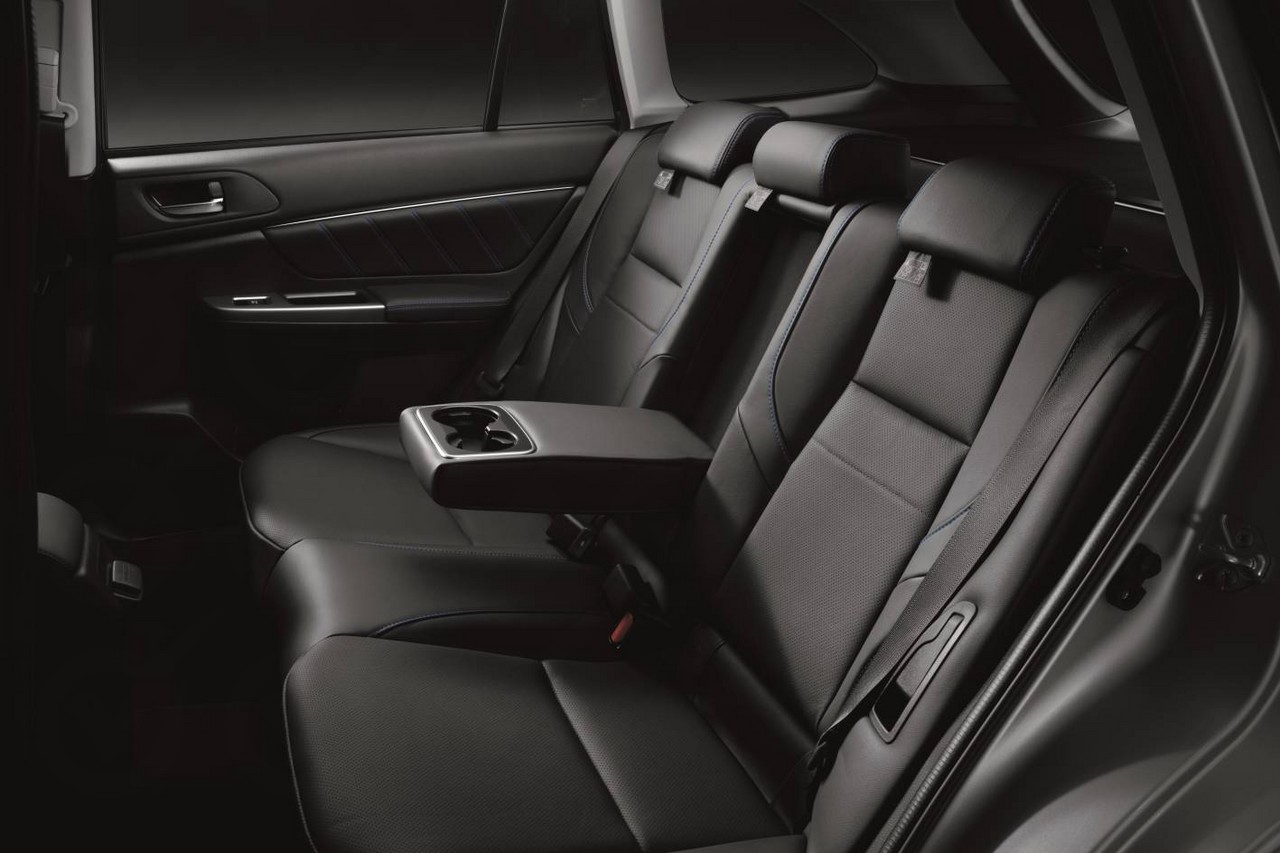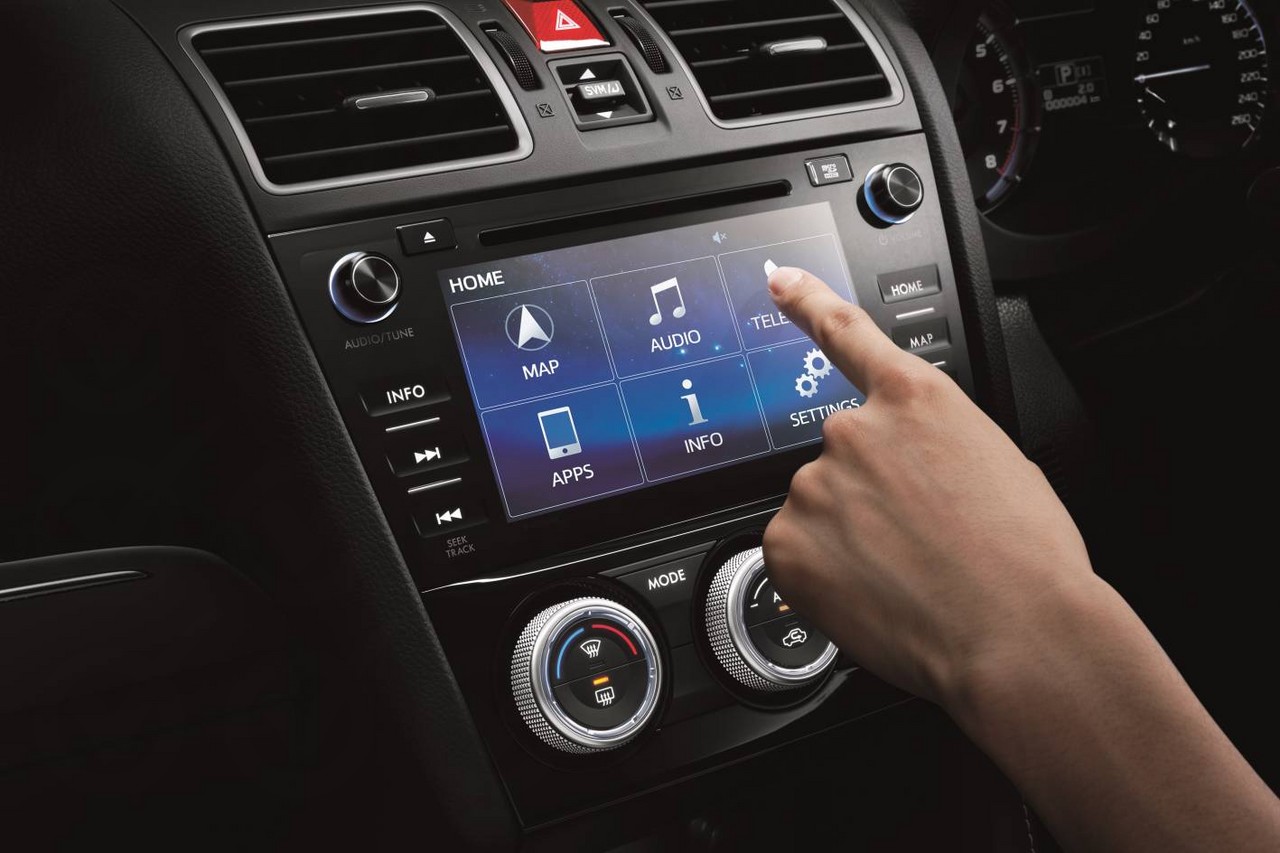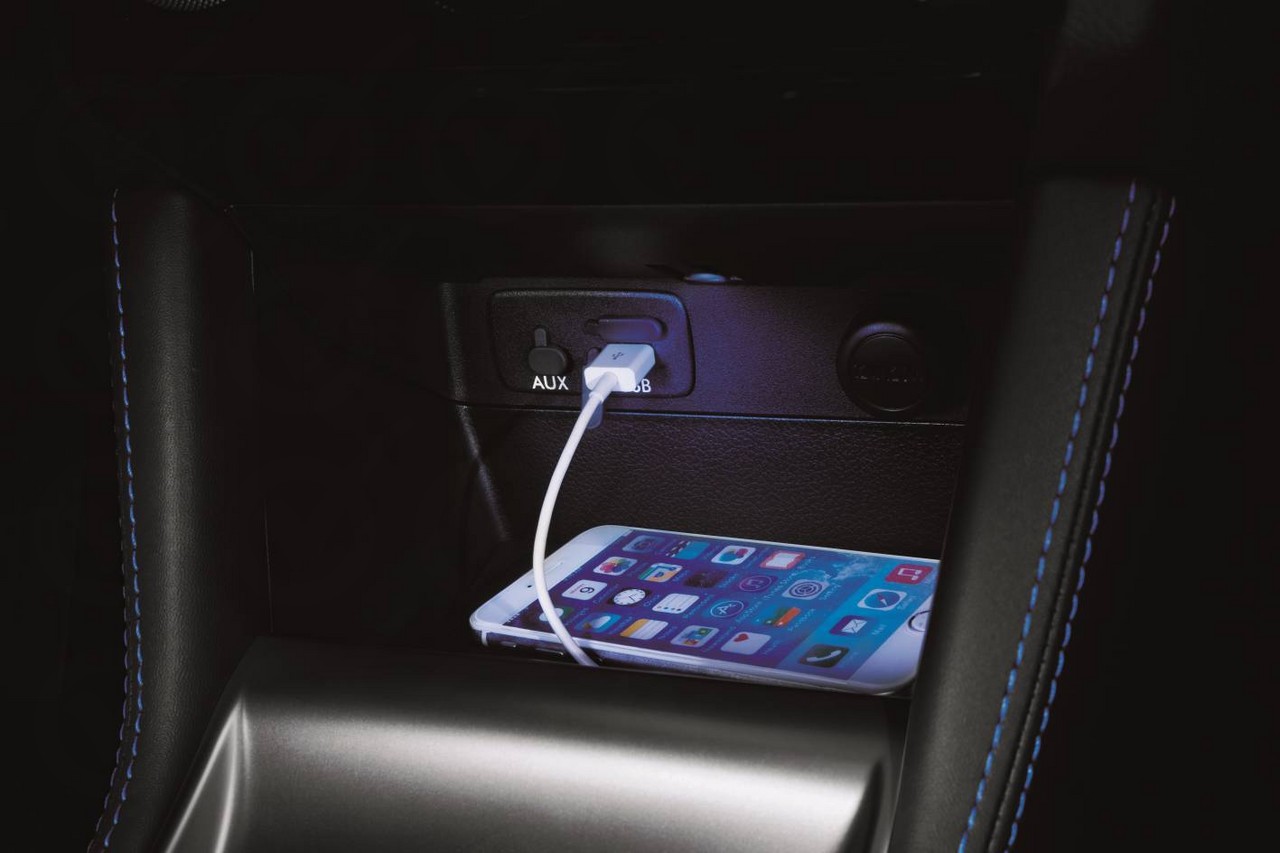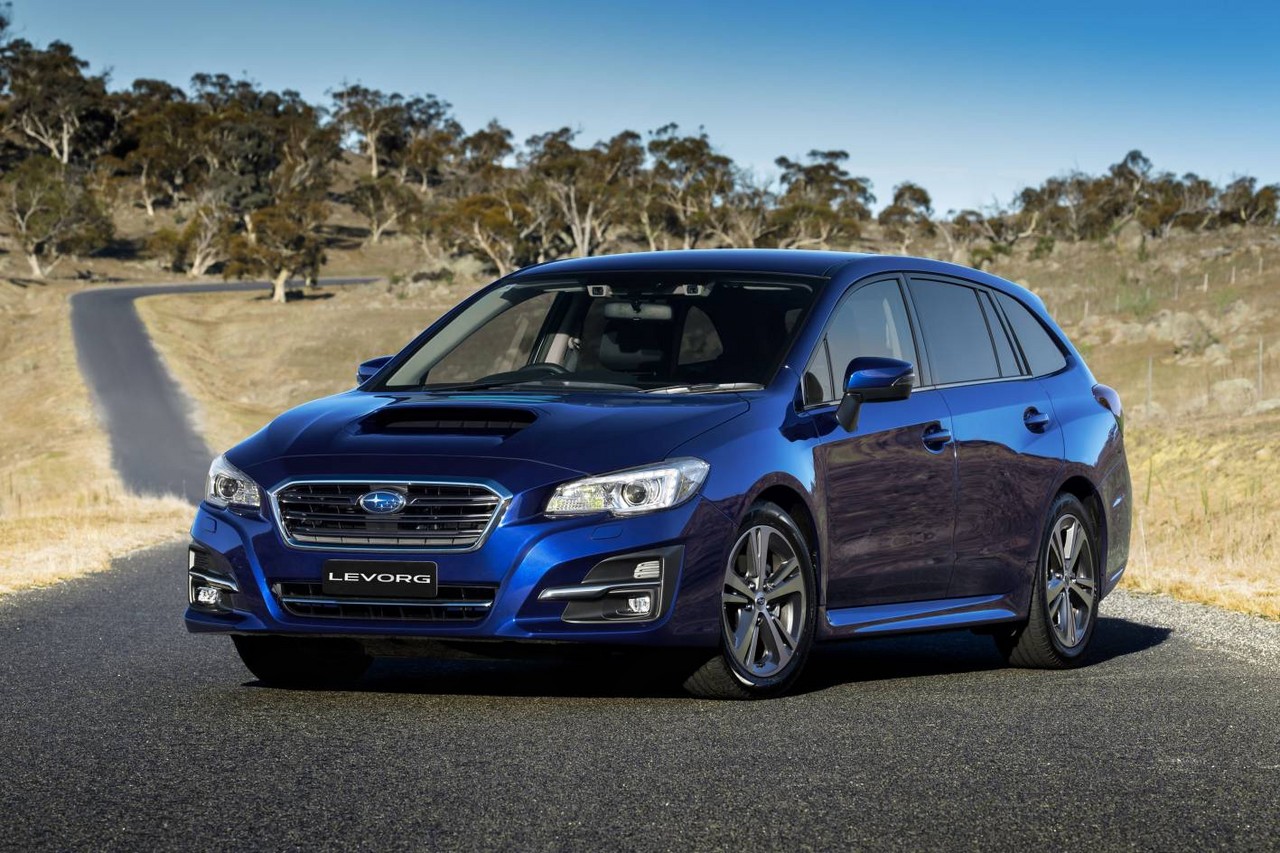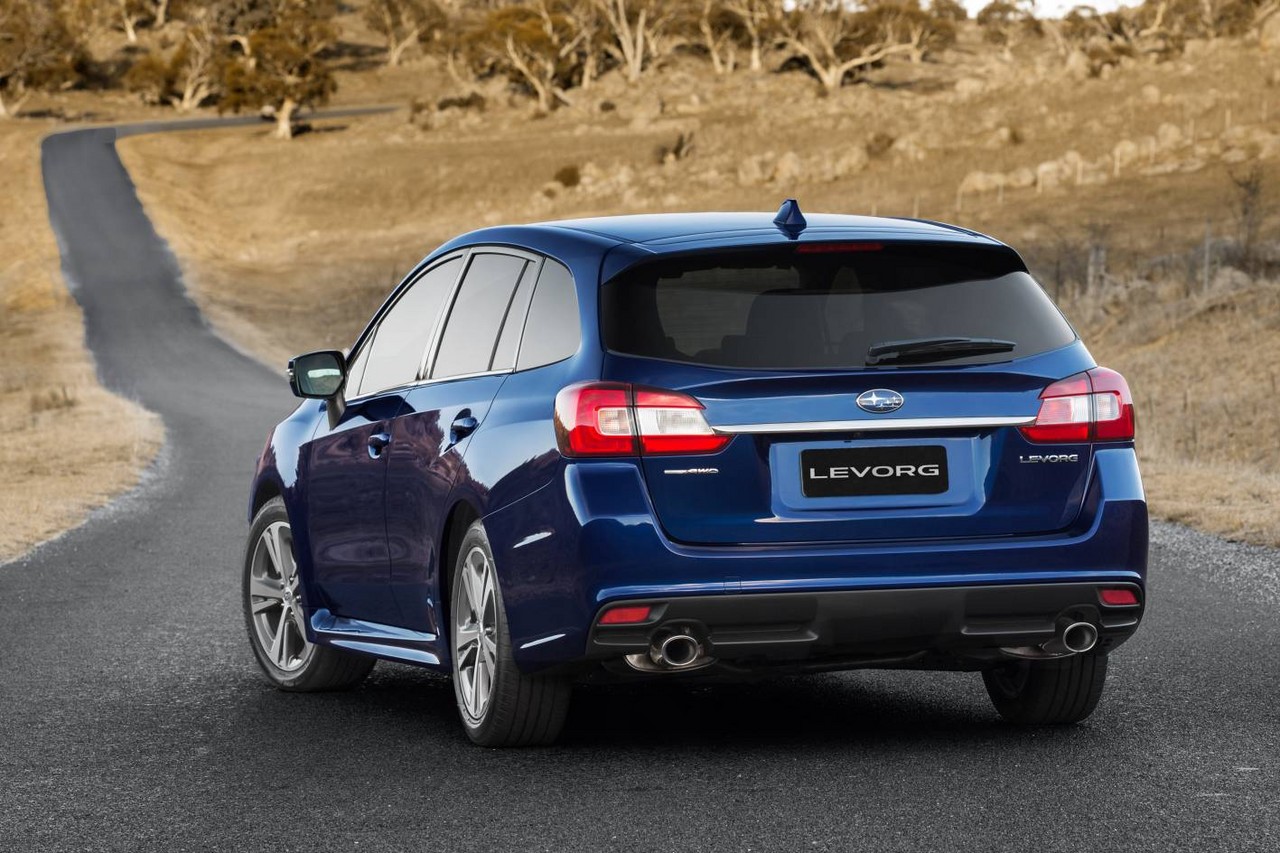
- Responsive FA20F engine shared with the Subaru V1 WRX
- AWD traction provides secure handling
- Good body control when cornering
- Flat-folding rear seats provide versatility
- Five star safety rating and Autonomous Emergency Braking (AEB) fitted as standard
- Whining noise from CVT at higher engine speeds
- Suspension lacks low-speed compliance
- Steering lacks feel and feedback
- Tyre noise on coarse chip roads
- Six month service intervals
Review: Subaru VM.I Levorg (2016-17)
Overview
Released in Australia in June 2016, the Subaru VM Levorg was a mid-size wagon. Manufactured in Gunma, Japan, the all-wheel drive Subaru Levorg was powered by a 2.0-litre turbocharged petrol engine that was mated to a continuously variable transmission (CVTs). For Australia, the Levorg was offered in GT, GT-S and GT-S Spec B variants.
The name Levorg was a combination of the words Legacy, Revolution and Touring.
FA20F engine
Shared with the Subaru V1 WRX , the 2.0-litre FA20F engine had an aluminium block and head, a twin-scroll Garrett MGT2259S turbocharger which provided maximum boost pressure of 1.10 bar (15.9 psi), double overhead camshafts (chain-driven), four valves per cylinder, Subaru’s Dual Active Valve Control System (AVCS, for variable intake and exhaust valve timing), direct fuel injection and a compression ratio of 10.6:1.
The FA20F engine did not have an ‘Auto Start Stop’ function that could shut down the engine when the vehicle was stationary in traffic. Over the combined ADR 81/02 test cycle, fuel consumption for the Subaru Levorg GT was 8.7 litres per 100 km.
| Variant | Engine | Trans. | Peak power | Peak torque |
|---|---|---|---|---|
| 2.0 GT, 2.0 GT-S, 2.0 GT-S Spec B |
2.0-litre FA20F turbo petrol F4 | CVT | 197 kW at 5600 rpm | 350 Nm at 2400-5200 rpm |
Continuously variable transmission (CVT)
The Subaru Levorg had a continuously variable transmission (CVT) which enables the driver to select from Intelligent, Sport and Sport Sharp drive modes which varied throttle sensitivity and gearshift behaviour. Of these,
- Intelligent: provided smooth power output and improved fuel economy, with variable shift when the accelerator position was less than 40 per cent and six-speed stepped shifting when accelerator position exceeded 40 per cent;
- Sport: increased use of higher engine speeds and had a lower accelerator position threshold of 30 per cent for variable and stepped six-speed shifting; and,
- Sport Sharp: sharper throttle response and eight-speed close-ratio stepped shifting.
All-wheel drive system: VTD
The Subaru Levorg 2.0 GT and GT-S had Subaru’s ‘Variable Torque Distribution’ (VTD) AWD system which consisted of a planetary centre differential and an electronically-controlled continuously variable hydraulic transfer clutch. In normal conditions, the VTD system provided a 45:55 front:rear torque split, though this varies according to driving and road conditions.
Dimensions
Compared to the related Subaru BN Liberty sedan , the Levorg was 106 mm shorter (at 4690 mm), 60 mm narrower (1780 mm), 10 mm lower (1490 mm) and had a 100 mm shorter wheelbase (2650 mm). Furthermore, luggage capacity for the Subaru Levorg was 486 litres.
Steering and suspension
The Subaru Levorg had MacPherson strut front suspension and double wishbone rear suspension. While the Levorg GT had KYB dampers, the Levorg GT-S and GT-S Spec B were fitted with Bilstein dampers; the Levorg GT-S Spec B also had a front strut brace that was designed to improve front-end rigidity.
The Subaru Levorg had rack-and-pinion steering with speed-sensitive, electric power assistance; its turning circle was 10.8 metres (kerb-to-kerb).
Safety equipment
Standard safety equipment for the Subaru Levorg included dual front airbags, a driver’s knee airbag, front seat-mounted side airbags, full-length curtain airbags, ABS, electronic brake force distribution, brake assist, electronic stability control, traction control and front seatbelts with pre-tensioners and load limiters.
Like the BN Liberty , the Subaru Levorg was fitted with Subaru’s EyeSight driver-assist system which used a stereo camera to provide the following functions –
- Adaptive Cruise Control (ACC): could maintain a safe distance from the vehicle ahead by braking, or accelerate up to the driver-selected target speed where safe to do so. ACC could operate at speeds up to 145 km/h and could detect illumination of the brake lights of the vehicle ahead for smoother deceleration and acceleration;
- Pre-Collision Braking Assist: could prime the braking system for more rapid deceleration when the brake pedal was depressed or autonomous braking activated;
- Pre-Collision Braking: could detect if a collision was imminent and autonomously apply the brakes to avoid or minimise the severity of the collision (also known as Autonomous Emergency Braking, or AEB);
- Vehicle Lane Departure Warning: could detect if the car began to drift outside its lane without the indicators having been activated and alert the driver;
- Front Vehicle Start Alert: if an obstacle was detected in front of the vehicle, sudden movement or unintended depression of the accelerator would be restricted. A warning display and sound would also be activated; and,
- Sway Warning: at speeds above 60 km/h, vehicle sway (or drift) was monitored and, if detected, a warning message and tone was issued. Vehicle sway could result from driver fatigue, inattentive driving or cross-winds.
The Levorg GT-S and GT-S Spec B were also equipped with an ‘EyeSight Assist Monitor’ which displayed warnings on the windscreen. Compared to the Levorg GT, the The Subaru Levorg GT-S and GT-S Spec B were also equipped with:
- Blind Spot Detection (BSD): could detect if another vehicle was in the driver’s blind spot and, if so, illuminated an icon in the door mirror. If the driver then applied the indicators to change into that lane, the icon would flash to warn the driver;
- Lane Change Assist (LCA): could detect if a vehicle in an adjacent lane was approaching from behind and would flash the icon in the door mirror on that side of the Levorg to warn the driver; and,
- Rear Cross Traffic Alert: could detect oncoming vehicles that may cross the Levorg’s path if it were to reverse from a parking space, and warn the driver by flashing the icon in the applicable door mirror.
Brakes
The Subaru Levorg had 316 mm by 30 mm ventilated front brake discs and 300 mm by 16 mm rear discs.
ANCAP testing: Subaru Levorg
In ANCAP testing , the Subaru Levorg received a five star adult occupant protection rating with a score of 35.85 out of 37. In the frontal offset test, protection of the driver’s head, neck, thighs and feet were rated as good, though chest and lower leg protection was rated as adequate (i.e. a slight risk of serious injury). In the side impact and pole tests, however, maximum points were awarded.
Euro NCAP testing: Subaru Levorg
In Euro NCAP testing , the Subaru Levorg received a five star safety rating which included a 92 per cent adult occupant protection rating and an 83 per cent child occupant protection rating. In the frontal offset test, protection of the driver’s head, thighs and feet were rated as good, though lower leg protection was rated as adequate and chest protection as marginal. While maximum points were awarded in the side impact test, chest protection was rated as adequate in the more severe pole test.
Features: Subaru Levorg GT
Standard features for the Subaru Levorg GT included 18 x 7.5J alloy wheels with a silver high gloss finish, 225/45 R18 Dunlop Sport Maxx tyres, a six sound system with a 6.2-inch touch screen, an in-dash CD player, auxiliary inputs (3.5 mm/USB/iPod), Bluetooth mobile phone connectivity and audio streaming, dual-zone climate control air conditioning, cruise control, a reversing camera, LED low beam headlights, front fog lights with integrated daytime running lights, automatic headlights, rain-sensing wipers, a leather-wrapped steering wheel and gear shifter, 60:40 split and folding rear seats, remote central locking with proximity key (i.e. keyless entry), power adjustable and folding door mirrors, power windows, a height and reach adjustable steering column, a height adjustable driver’s seat, push-button start, rear privacy glass, two 12 volt power sockets (centre console and in front of the gear lever), two USB charger ports, illuminated vanity mirrors, a trip computer with a 4.3-inch multi-function display (MFD) and an immobiliser.
As standard, the Subaru Levorg was fitted with a space-saver spare wheel.
Features: Subaru Levorg GT-S
Compared to the Subaru Levorg GT, the Levorg GT-S was further equipped with a satellite navigation system which had a seven-inch display, Siri and Pandora compatibility, an additional USB port in the lower centre dashboard, front sports seats with heating, an eight-way power adjustable driver’s seat with memory settings, leather seat trim, dusk-sensing headlights, rain-sensing wipers, heated door mirrors, a power-operated sunroof (with tilt-up function) and an electrochromatic rear view mirror.
As standard, the Subaru Levorg GT-S was also fitted with:
- High Beam Assist which could detect traffic – oncoming and travelling in the same direction as the driver – and revert to low beams to avoid dazzling other drivers (see video below); and,
- Subaru’s ‘Side View Monitor’ which used a camera in the passenger side mirror and displayed that information on the multi-function display to indicate the distance from the kerb (or a parked vehicle) when reversing into a parking space.
The Levorg GT-S was available with Black or Bright Pearl leather, both of which were complemented by blue stitching. Visually, the Levorg GT-S could be identified by its black headlight surrounds and dark gray high-gloss finish for the alloy wheels.
Features: Subaru Levorg GT-S Spec B
The Subaru Levorg GT-S Spec B was a locally fitted option pack that included a range of Subaru Tecnica International (STI) parts such as:
- 18-inch STI black alloy wheels;
- An STI front tower bar;
- STI front, side, lower rear and roof spoilers;
- An STI gearshift knob; and,
- A red STi start button.
Paint colours
The Subaru Levorg was available in Crystal White Pearl, Ice Silver Metallic, Dark Gray Metallic, Crystal Black Silica, Pure Red, Steel Blue Gray Metallic and Lapis Blue Metallic paint finishes.
Brochure
Related links
Review: Subaru VM.II Levorg (2017-20)
Overview
Officially released in Australia in August 2017, the Subaru VM Series II (VM.II) Levorg introduced a revised range as 1.6 GT, 1.6 GT Premium and 2.0 STI Sport variants were introduced. Visually, the VM.II Levorg could be identified by its new LED headlights, higher-quality LED front fog lights, revised front bumper and grille and new alloy wheel designs. Inside, the VM.II Levorg was fitted with a larger 5.9-inch LCD multi-function display (previously 4.3-inch display) which could display air conditioning information, trip computer information and seatbelt warnings.
Introduced as part of the update, the Subaru VM.II Levorg was equipped with ‘Auto Vehicle Hold’ (AVH) which held the brake pedal once the vehicle was stationary. As such, the driver no longer needed to keep their foot on the brake pedal in situations like when the vehicle was stationary in traffic or stopped on hills.
Levorg 1.6 GT: FB16 engine and AWD system
For the Levorg 1.6 GT, the 1.6-litre FB16 four-cylinder petrol engine had an aluminium block and head, a twin-scroll turbocharger, direct injection, double overhead camshafts (chain-driven), four valves per cylinder, Subaru’s Dual Active Valve Control System (AVCS, for variable intake and exhaust valve timing) and a compression ratio of 11.0:1. To minimise fuel consumption, the FB16 engine had an ‘Auto Start Stop’ function which enabled the engine to shut down when the vehicle was stationary in traffic.
The Levorg 1.6 GT variants were fitted with Subaru’s ‘Active Torque Split’ all-wheel drive system which used an electronically-controlled, hydraulic multi-plate transfer clutch (instead of a centre differential). In normal conditions, the system provided a 60:40 front:rear torque split but sensors – measuring wheel slip, throttle position and braking – could anticipate a loss of front-wheel traction and increase torque to the rear axle if required.
| Variant | Engine | Trans. | Peak power | Peak torque |
|---|---|---|---|---|
| 1.6 GT, 1.6 GT Premium |
1.6-litre FB16 turbo petrol I4 | CVT | 125 kW at 4800-5600 rpm | 250 Nm at 1800-4800 rpm |
| 2.0 GT-S, 2.0 STI Sport |
2.0-litre FA20F turbo petrol F4 | CVT | 197 kW at 5600 rpm | 350 Nm at 2400-5200 rpm |
Suspension
For the Subaru VM.II Levorg 1.6 GT Premium, 2.0 GT-S and 2.0 STI Sport, the Bilstein suspension was revised for greater ride comfort. Changes included:
- For the front suspension, a rubber bush plate for the front arms;
- For the front and rear suspension, revised coil spring stiffness, rebound length and damping forces; and,
- For the rear suspension, optimised stabiliser bar thickness
Safety equipment
Compared to the Subaru VM.I Levorg, standard safety equipment for the VM.II Levorg 1.6 GT Premium, 2.0 GT-S and 2.0 STI Sport was extended to include:
- Front View Monitor (FVM): could display images from a camera mounted at the front of the vehicle on the Multi-Function Display. As such, the Front View Monitor enabled the driver to check for approaching vehicles or pedestrians at intersections with poor visibility; and,
- Smart Rear View Mirror: when ‘Display Mode’ was selected using a switch at the bottom of the mirror, the Smart Rear View Mirror displayed images from a rear-view camera that was mounted above the rear gate glass.
Brakes
For the Subaru VM.II Levorg, the 2.0 GT and STI Sport models were fitted with a new brake pad material which – according to Subaru – improved brake efficiency by approximately 20 per cent.
Features: Subaru VM.II Levorg
Compared to the Subaru VM.I Levorg 2.0 GT, standard features for the VM.II Levorg 1.6 GT were extended to include directional headlights with dusk-sensing function, LED front fog lights, LED daytime running lights and rain-sensing wipers. The Levorg 1.6 GT, however, was fitted with 17 x 7.0J alloy wheels and 215/50 R17 91V tyres,
Relative to the Levorg 1.6 GT, the Levorg 1.6 GT Premium was further equipped with a factory-fitted satellite navigation system with a seven-inch display, a ten-way power adjustable driver’s seat with memory settings, front sports seats with heating function, leather seat trim with blue stitching, a rear-view mirror with auto-glare function, power-operated sunroof and front windscreen de-icer. Visually, the Levorg 1.6 GT Premium could be identified by its black headlight accents and silver door mirrors.
The Levorg 2.0 GT-S was similarly equipped to the 1.6 GT Premium, but fitted with 18 x 7.5J alloy wheels (with black accents) and 225/45 R18 91W tyres. Furthermore, the Levorg 2.0 GT-S and 2.0 STI Sport models also had a selectable ‘Sport #’ drive mode.
The range-topping Levorg 2.0 STI Sport was distinguished by its STI tuned suspension, maroon leather-trimmed seats, red stitching, STI steering wheel logo, STI side sill plates and STI instrument cluster logo. The Levorg 2.0 STI Sport could also be identified by its STI 18-inch alloy wheels, unique front bumper and grille, and STI exhaust tips.
Brochure
Related links
